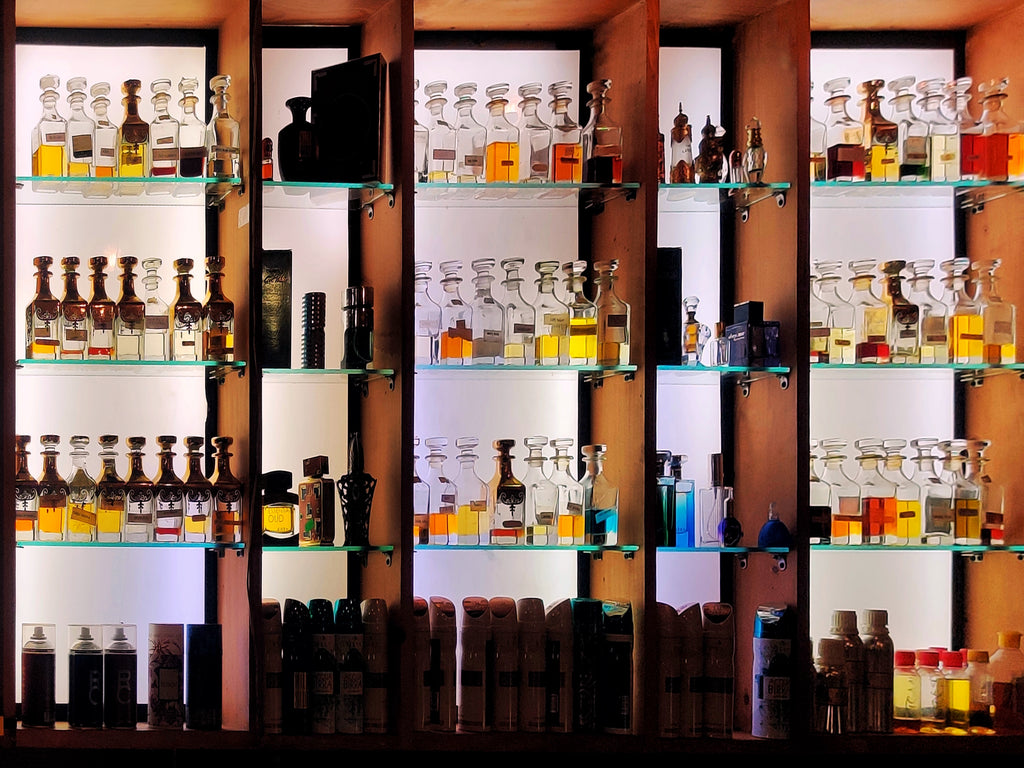Scotch Whisky, Bourbon, Japanese Whisky: What’s the difference?
Posted by BERNADETTE PAMPLIN

Photo Credit: Omkar Jadhav, Pexels
We’re all frisky for whisky! But how well do you know your styles?
Whisky is essentially a grain based distillate that has been matured in oak barrels. However, for this simple definition, it comes in many forms. Today we’re going to look at three popular styles and the differences between them. Scotch Whisky, Bourbon and Japanese Whisky, which has been growing in popularity around the world.
Scotch Whisky

Photo credit: James Dollin, Pexels
History of Scotch
Scotch Whisky has a heritage stretching back around five hundred years. The earliest documentation of a distillation was recorded in 1494 in the tax records. Indeed, Scotch Whisky has a rich history including illicit stills and tax evasion, and even inspired a poem by Robert Burns. The continuation of illicit distilling was so prominent that courts gave up fighting it and actually legalised distillation in order to tax the valuable resource.
The Column Still
Having always been made with malt, the invention of the column still by Andreas Coffey came with the birth of continuous distillation and the use of grains, creating spirits lighter in character than their malted counterparts.
Scotch: Defined
The first definition of Scotch in UK law was secured by 1933, with a dedicated Scotch Whisky Act in 1988 and new Scotch Whisky Regulations in 2009. This means that by law, Scotch Whisky must be distilled and matured in Scotland in oak casks for at least three years and be bottled at a minimum strength of 40% abv.
Characteristics
There is a notable peat character to scotch, which historically came about by the cold climate and burning of peat to cook the grains as opposed to using vital wood.
At Your Drink Box we stock Jura Winter Edition, a rich and warming sherry cask finish, and Nc’Nean Organic Single Malt, made with organic Scottish barley and matured in red wine and American whisky barrels to develop its signature body and sweetness.
>>Shop our Scotch collection
Japanese Whisky

Characteristics
Japanese Whisky is more akin to Scotch Whisky than American Bourbon. It’s double distilled with malted and/or peated barley, meaning these spirits tend to be drier, smokier and peatier than the sweetener bourbons or ryes (that said, they are sometimes not as peated as Scotch Whiskies). They also tend to come in single malts or blends.
Likewise, many Japanese distilleries import a lot of their ingredients from Scotland. Despite this, there is still an individuality in taste. This comes from the minute details in the Japanese distilling process, still shape, local water and the wood of the aging barrels. Some whiskies are aged in imported bourbon barrels, but additionally, there are barrels made from Mizunara, a tree native to Japan, which adds its own particular flavour.
Production
There are notable differences in production. For example, there are more Scottish distilleries than Japanese. However, the fewer distilleries can produce nearly as many different malts. Additionally, Japanese distilleries use a large variety of yeasts, in some instances developing their own strains.
Due to the height of some distilleries (the Japanese have three of the highest distilleries in the world), this brings about a natural state of lower pressure distillation, which means distillation occurs at a lower temperature. In this sort of process the ingredients aren’t ‘cooked’ as much as those at a higher distillation temperature. This brings about lighter and fresh flavours as opposed to standard distillation which creates a character of richer, more stewed notes.
Despite these differences, there is still a shared character of Scotch and Japanese Whisky. The difference really lies in the way of thinking. Scotch Whisky tends to stay true to it’s past and its heritage, whereas Japanese Whisy production is always being refined.
At Your Drink Box we stock a range from Kamiki, including Japanese, Sakura - finished in Japanese Cherry Blossom casks, and Intense, the first whisky in the world to be finished in Japanese Cedar casks.
>>Shop our Japanese Whisky collection
American Bourbon

History of Bourbon
American Bourbon, although related, is quite a different kettle of fish.
Distillation of this wonderful spirit began among poor farmers in Maryland and Pennsylvania to make money from excess grain crops, namely corn. The trade then moved south to Kentucky to escape increased tax rates.
Back in 1795, the large production county was called 'Bourbon' and even after counties changed, people still referred to the area as ‘Old Bourbon’. Barrels being shipped to Ohio had ‘Old Bourbon’ stamped on them and this name stuck for any corn-based whisky.
Bourbon: Defined
Since then, rules evolved. You must "use 51-80% corn (supplemented by wheat, rye and/or barley); distil no higher than 80% abv; put into new charred white-oak casks no higher than 62.5% abv; add nothing else except water.”
Legal requirements state Bourbon must be produced in the US, made from a grain mixture with at least 51% corn, aged in new, charred-oak containers, distilled to no more than 80% abv, entered into the container for aging at no more than 62.5% abv and bottled at no less than 40% abv.
Characteristics
The corn base is part of bourbon's recognisably sweeter profile. Supplementing with wheat can add smoothness and a subtle nutty character, whereas supplementing with rye adds a drier, spicier pepper flavour.
On the whole, the character of bourbon is normally described as comprising vanilla, toffee and cinnamon, making the spirit a lot sweeter than Japanese and Scotch Whiskies.
At Your Drink Box, we stock two bourbons, J.W Kelly Old Millford Bourbon, first made in 1866, and Griffo Stony Point American Whiskey, a young whisky with notes of nutty corn and rye spice on the finish.
>>Shop our Bourbon collection
Final Thoughts
Whisky is a great example of the huge scope of flavour and the differences made by grain base and production techniques. Considering this, it’s easy to see how these spirits can become an obsession to collectors.
Now, I don’t know about you, but reading this sure has me hankering for an Old Fashioned so I’m off to make one. Cheers!

Photo credit: Taryn Elliott, Pexels
About the Author: Bernadette Pamplin

After landing a job in a gin bar, Bernadette became obsessed with gin and sought extensive training to learn all she could about the juniper spirit. Later, she merged her passion for gin and her passion for words by becoming a drinks writer.
She now pens articles for publications like Gin Magazine, content for Your Drink Box and her own popular blog Under The Ginfluence.
She has also served as Brand Ambassador for a large UK Gin Festival and helps organise the Craft Distilling Expo as well as speaking on panels at it.
Bernadette has four years experience judging events like Gin of the Year, World Gin Awards, Spirits Business Awards, Gin Guide Awards, IWSC and the American Distilling Institute Judging of Craft Spirits. She loves trying gins, learning to distinguish flavours and how the botanicals and distillation processes create the final result. Very much "under the ginfluence," Bernadette is driven by the spirit's history, flavour and story. While gin is her speciality, she has affection for all spirits.




vvvvvvvvvvv On
<a href=”https://caluaniemuelearoxidizeforsale.com/shop/” >caluanie muelear oxidize for sale
<a href=”https://caluaniemuelearoxidizeforsale.com/” >buy caluanie muelear oxidize online
<a href=”https://caluaniemuelearoxidizeforsale.com/product/caluanie-oxidize-usa/” >caluanie muelear oxidize price in usa
<a href=”https://caluaniemuelearoxidizeforsale.com/product/buy-caluanie-muelear-oxidize-online/” >buy caluanie muelear oxidize
<a href=”https://caluaniemuelearoxidizeforsale.com/” >caluanie muelear oxidize online dealer
<a href=”https://caluaniemuelearoxidizeforsale.com/about-us/” >caluanie muelear oxidize traders
<a href=”https://caluaniemuelearoxidizeforsale.com/product/caluanie-muelear-oxidize-for-sale/” >caluanie for sale
<a href=”https://caluaniemuelearoxidizeforsale.com/product/buy-caluanie-muelear-oxidize-online/” >caluanie muelear oxidize price
<a href=”https://caluaniemuelearoxidizeforsale.com/product/caluanie-oxidize-usa/” >caluanie muelear oxidize usa
<a href=”https://caluaniemuelearoxidizeforsale.com/” >caluanie muelear oxidize
<a href=”https://caluaniemuelearoxidizeforsale.com/product/caluanie-muelear-oxidize-for-sale/” >caluanie muelear price
<a href=”https://caluaniemuelearoxidizeforsale.com/” >caluanie muelear oxidize near me
<a href=”https://caluaniemuelearoxidizeforsale.com/product/caluanie-oxidize-usa/” >caluanie
<a href=”https://caluaniemuelearoxidizeforsale.com/” >caluanie muelear oxidize amazon
<a href=”https://irishdrivinglicenseforsale.com/?page_id=329/” >fake id ireland
<a href=”https://irishdrivinglicenseforsale.com/?page_id=329/” >irish fake id
<a href=”https://irishdrivinglicenseforsale.com/?page_id=329/” >fake irish id
<a href=”https://irishdrivinglicenseforsale.com/?p=34/” >b driving license
<a href=”https://irishdrivinglicenseforsale.com/?p=256/” >how much is a full irish driving licence
<a href=”https://irishdrivinglicenseforsale.com/?p=256/” >ireland learner permit
<a href=”https://irishdrivinglicenseforsale.com/?page_id=329/” >buy fake id
<a href=”https://irishdrivinglicenseforsale.com/?page_id=329/” >ireland fake id
<a href=”https://irishdrivinglicenseforsale.com/?p=282/” >fake irish driving licence
<a href=”https://irishdrivinglicenseforsale.com/?page_id=329/” >fake id dublin
<a href=”https://irishdrivinglicenseforsale.com/?p=34/” >category b driving license
<a href=”https://irishdrivinglicenseforsale.com/?page_id=329/” >fake age card
<a href=”https://irishdrivinglicenseforsale.com/?p=282/” >fake irish driving licence
<a href=”https://irishdrivinglicenseforsale.com/?p=34/” >b licence ireland
<a href=”https://irishdrivinglicenseforsale.com/?page_id=329/” >fake id irish
<a href=”https://irishdrivinglicenseforsale.com/?p=621/” >buy irish driving licence online
<a href=”https://irishdrivinglicenseforsale.com/?p=416/” >irish driving licence
<a href=”https://irishdrivinglicenseforsale.com/?p=78/” >c1 licence ireland
<a href=”https://irishdrivinglicenseforsale.com/?page_id=329/” >fakeid ireland
<a href=”https://irishdrivinglicenseforsale.com/?page_id=329/” >where to buy fake id
<a href=”https://irishdrivinglicenseforsale.com/?page_id=329/” >fake id online
<a href=”https://irishdrivinglicenseforsale.com/?p=34/” >category b driving license ireland
<a href=”https://irishdrivinglicenseforsale.com/?p=282/” >fake id northern ireland
<a href=”https://irishdrivinglicenseforsale.com/?p=202/” >fake driving licence ireland
<a href=”https://irishdrivinglicenseforsale.com/?page_id=329/” >fake student card
<a href=”https://irishdrivinglicenseforsale.com/” >buy irish driving license
<a href=”https://irishdrivinglicenseforsale.com/?p=621/” >buy irish driving licence
<a href=”https://irishdrivinglicenseforsale.com/” >irish driving licence for sale
<a href=”https://irishdrivinglicenseforsale.com/?page_id=8/” >irish driving licence for sale
<a href=”https://irishdrivinglicenseforsale.com/?p=416/” >irish driving licence number
<a href=”https://irishdrivinglicenseforsale.com/?p=34/” >category b driving licence
<a href=”https://irishdrivinglicenseforsale.com/?p=34/” >b licence
<a href=”https://irishdrivinglicenseforsale.com/?p=128/” >renew drivers license ireland
<a href=”https://irishdrivinglicenseforsale.com/?p=34/” >b driving licence
<a href=”https://irishdrivinglicenseforsale.com/?p=34/” >what is a category b licence
<a href=”https://irishdrivinglicenseforsale.com/?p=34/” >b license ireland
<a href=”https://irishdrivinglicenseforsale.com/?p=282/” >fake driving license ireland
<a href=”https://irishdrivinglicenseforsale.com/” >buy irish license
<a href=”https://irishdrivinglicenseforsale.com/?p=128/” >irish driving licence renewal
<a href=”https://buyirishdrivinglicenseonline.com/product-category/irish-learners-permit/” >learners permit ireland
<a href=”https://buyirishdrivinglicenseonline.com/product-category/irish-driver-license/” >irish drivers license
<a href=”https://buyirishdrivinglicenseonline.com/product-category/greece-drivers-license/” >swedish driving license
<a href=”https://buyirishdrivinglicenseonline.com/product-category/greece-drivers-license/” >irish driving licence for sale
<a href=”https://buyirishdrivinglicenseonline.com/category/how-to-get-a-category-b-irish-driving-licence//” >category b driving license ireland
<a href=”https://buyirishdrivinglicenseonline.com/category/getting-a-driving-licence/” >ireland driver license renewal
<a href=”https://buyirishdrivinglicenseonline.com/category/how-to-get-an-irish-driving-licence/” >how to get a driving license ireland
<a href=”https://buyirishdrivinglicenseonline.com/product-category/swiss-drivers-license/” >swiss driving licence
<a href=”https://buyirishdrivinglicenseonline.com/category/how-to-get-a-category-b-irish-driving-licence/” >ireland category b licence
<a href=”https://buyirishdrivinglicenseonline.com/product/australian-passport/” >buy australian passport
<a href=”https://buyirishdrivinglicenseonline.com/product-category/greece-drivers-license/” >irish learners permit
<a href=”https://buyirishdrivinglicenseonline.com/2022/10/20/how-to-get-your-fake-id-in-ireland/” >fake age card ireland
Ansu Chan On
Interesting blog. Very insightful.
https://www.liquidz.com.hk/shop/spirit/whisky/japanese-whisky/
Coreyweigh On
come perdere la pancia